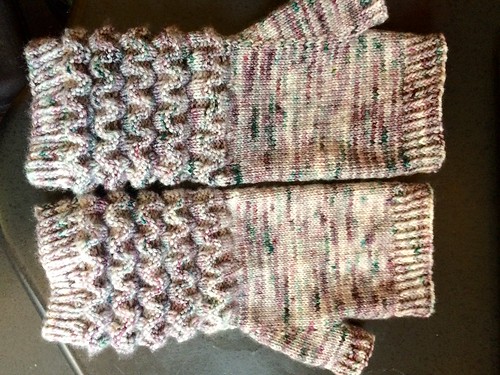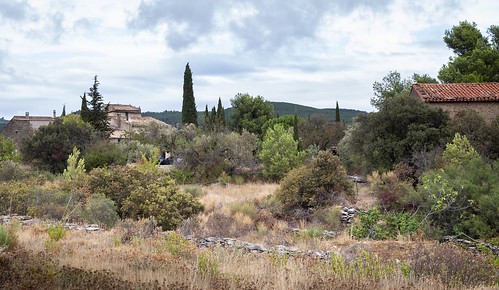Educe [3H]TCDD specific binding.cells grown in white clear-bottomed 96-well microplates were incubated with carrier solvent DMSO (10 ml/ml), TCDD (1 nM), or the indicated concentration of sample extract for 4 h (in H1L1.1c2 cells) or 24 h (in H1L6.1c2 cells) at 37uC and luciferase activity measured in a microplate luminometer as previously described [13]. For Epigenetics analysis of AhR-responsive endogenous CYP1A1 gene expression, mouse hepatoma (Hepa1c1c7) cells were treated with the indicated chemical/extract and mRNA for CYP1A1 and Rig-S15 (internal control for normalization using primers 59-TTCCGCAAGTTCACCTACC and 59CGGGCCGGCCATGCTTTACG) amplified by RT-PCR as previously described in detail [14]. Analysis of the ability of extracts to stimulate estrogen receptor (ER)-dependent gene expression, we utilize a recombinant human ovarian (BG1Luc4E2) cell line that contains a stably transfected ER-responsive firefly luciferase reporter gene [20]. Cells were grown and maintain as described [20] and were maintained in estrogen-stripped media for 5 days before they were plated into white, clear-bottomed 96-well  tissue culture dishes at 75,000 cells/ well and allowed to attach for 24 hr. Cells were then incubated with carrier solvent (ethanol; 1 final solvent concentration), 17bestradiol (1 nM), the indicated sample extract for 24 hr at 37uC. Luciferase activity was determined as described above and activity expressed relative to that produced by E2.Exposure to human skin and quantitative real time PCROn the day of 1516647 gene expression assays for CYP1A1 (Hs00153120_m1), b-actin (Hs99999903_m1) and 18S RNA (Hs99999901_s1) with an ABI 7700 real time PCR Sequence Detection System as previously described [21]. Relative mRNA levels were calculated using the Ct method and CYP1A1 expression was normalized to the geometric mean of b-actin and 18S RNA values [22].Cell cultures, chemical treatment, luciferase activity and cytochrome P4501A1 (CYP1A1) mRNAFor AhR-dependent chemically activated luciferase expression (CALUX) analysis, recombinant guinea pig intestinal adenocarcinoma (G16L1.1c8), mouse hepatoma (H1L1.1c2), rat hepatoma (H4L1.1c4) and human hepatoma (HG2l1.1c3) cells, containing the stably integrated DRE-driven firefly luciferase reporter plasmid pGudLuc1.1, were grown, maintained, treated and luciferase activity measured as previously described in detail [13,15]. Luciferase activity in each well was expressed relative to that induced by 1 nM
tissue culture dishes at 75,000 cells/ well and allowed to attach for 24 hr. Cells were then incubated with carrier solvent (ethanol; 1 final solvent concentration), 17bestradiol (1 nM), the indicated sample extract for 24 hr at 37uC. Luciferase activity was determined as described above and activity expressed relative to that produced by E2.Exposure to human skin and quantitative real time PCROn the day of 1516647 gene expression assays for CYP1A1 (Hs00153120_m1), b-actin (Hs99999903_m1) and 18S RNA (Hs99999901_s1) with an ABI 7700 real time PCR Sequence Detection System as previously described [21]. Relative mRNA levels were calculated using the Ct method and CYP1A1 expression was normalized to the geometric mean of b-actin and 18S RNA values [22].Cell cultures, chemical treatment, luciferase activity and cytochrome P4501A1 (CYP1A1) mRNAFor AhR-dependent chemically activated luciferase expression (CALUX) analysis, recombinant guinea pig intestinal adenocarcinoma (G16L1.1c8), mouse hepatoma (H1L1.1c2), rat hepatoma (H4L1.1c4) and human hepatoma (HG2l1.1c3) cells, containing the stably integrated DRE-driven firefly luciferase reporter plasmid pGudLuc1.1, were grown, maintained, treated and luciferase activity measured as previously described in detail [13,15]. Luciferase activity in each well was expressed relative to that induced by 1 nM  TCDD. Analysis of the time-dependence of the ability of each extract to stimulate AhR-depe.Educe [3H]TCDD specific binding.cells grown in white clear-bottomed 96-well microplates were incubated with carrier solvent DMSO (10 ml/ml), TCDD (1 nM), or the indicated concentration of sample extract for 4 h (in H1L1.1c2 cells) or 24 h (in H1L6.1c2 cells) at 37uC and luciferase activity measured in a microplate luminometer as previously described [13]. For analysis of AhR-responsive endogenous CYP1A1 gene expression, mouse hepatoma (Hepa1c1c7) cells were treated with the indicated chemical/extract and mRNA for CYP1A1 and Rig-S15 (internal control for normalization using primers 59-TTCCGCAAGTTCACCTACC and 59CGGGCCGGCCATGCTTTACG) amplified by RT-PCR as previously described in detail [14]. Analysis of the ability of extracts to stimulate estrogen receptor (ER)-dependent gene expression, we utilize a recombinant human ovarian (BG1Luc4E2) cell line that contains a stably transfected ER-responsive firefly luciferase reporter gene [20]. Cells were grown and maintain as described [20] and were maintained in estrogen-stripped media for 5 days before they were plated into white, clear-bottomed 96-well tissue culture dishes at 75,000 cells/ well and allowed to attach for 24 hr. Cells were then incubated with carrier solvent (ethanol; 1 final solvent concentration), 17bestradiol (1 nM), the indicated sample extract for 24 hr at 37uC. Luciferase activity was determined as described above and activity expressed relative to that produced by E2.Exposure to human skin and quantitative real time PCROn the day of 1662274 excision, samples of human foreskin were cut in half and suspended in 4 ml of DMEM:F12 (2:1) culture medium. The samples were obtained as discarded (routinely collected earlier that day in the circumcision clinic), and no information about the subject was available. Collection without informed consent was approved by the University of California, Davis Institutional Review Board under exempt category #4. For each tissue sample, one half was treated with DMSO (20 ml/ml) and the other with DMSO (20 ml/ml) containing TCDD (final concentration 10 nM) or the indicated extract (20 ml/ml). After overnight incubation at 37uC, samples were rinsed quickly in phosphate buffered saline, frozen in liquid nitrogen, homogenized to a powder in a mortar and pestle and extracted with Trizol. Total RNA was transcribed with a High Capacity cDNA Archive kit (Applied Biosystems, Carlsbad, CA), and cDNAs were quantitated using Applied Biosystems Taqman 1516647 gene expression assays for CYP1A1 (Hs00153120_m1), b-actin (Hs99999903_m1) and 18S RNA (Hs99999901_s1) with an ABI 7700 real time PCR Sequence Detection System as previously described [21]. Relative mRNA levels were calculated using the Ct method and CYP1A1 expression was normalized to the geometric mean of b-actin and 18S RNA values [22].Cell cultures, chemical treatment, luciferase activity and cytochrome P4501A1 (CYP1A1) mRNAFor AhR-dependent chemically activated luciferase expression (CALUX) analysis, recombinant guinea pig intestinal adenocarcinoma (G16L1.1c8), mouse hepatoma (H1L1.1c2), rat hepatoma (H4L1.1c4) and human hepatoma (HG2l1.1c3) cells, containing the stably integrated DRE-driven firefly luciferase reporter plasmid pGudLuc1.1, were grown, maintained, treated and luciferase activity measured as previously described in detail [13,15]. Luciferase activity in each well was expressed relative to that induced by 1 nM TCDD. Analysis of the time-dependence of the ability of each extract to stimulate AhR-depe.
TCDD. Analysis of the time-dependence of the ability of each extract to stimulate AhR-depe.Educe [3H]TCDD specific binding.cells grown in white clear-bottomed 96-well microplates were incubated with carrier solvent DMSO (10 ml/ml), TCDD (1 nM), or the indicated concentration of sample extract for 4 h (in H1L1.1c2 cells) or 24 h (in H1L6.1c2 cells) at 37uC and luciferase activity measured in a microplate luminometer as previously described [13]. For analysis of AhR-responsive endogenous CYP1A1 gene expression, mouse hepatoma (Hepa1c1c7) cells were treated with the indicated chemical/extract and mRNA for CYP1A1 and Rig-S15 (internal control for normalization using primers 59-TTCCGCAAGTTCACCTACC and 59CGGGCCGGCCATGCTTTACG) amplified by RT-PCR as previously described in detail [14]. Analysis of the ability of extracts to stimulate estrogen receptor (ER)-dependent gene expression, we utilize a recombinant human ovarian (BG1Luc4E2) cell line that contains a stably transfected ER-responsive firefly luciferase reporter gene [20]. Cells were grown and maintain as described [20] and were maintained in estrogen-stripped media for 5 days before they were plated into white, clear-bottomed 96-well tissue culture dishes at 75,000 cells/ well and allowed to attach for 24 hr. Cells were then incubated with carrier solvent (ethanol; 1 final solvent concentration), 17bestradiol (1 nM), the indicated sample extract for 24 hr at 37uC. Luciferase activity was determined as described above and activity expressed relative to that produced by E2.Exposure to human skin and quantitative real time PCROn the day of 1662274 excision, samples of human foreskin were cut in half and suspended in 4 ml of DMEM:F12 (2:1) culture medium. The samples were obtained as discarded (routinely collected earlier that day in the circumcision clinic), and no information about the subject was available. Collection without informed consent was approved by the University of California, Davis Institutional Review Board under exempt category #4. For each tissue sample, one half was treated with DMSO (20 ml/ml) and the other with DMSO (20 ml/ml) containing TCDD (final concentration 10 nM) or the indicated extract (20 ml/ml). After overnight incubation at 37uC, samples were rinsed quickly in phosphate buffered saline, frozen in liquid nitrogen, homogenized to a powder in a mortar and pestle and extracted with Trizol. Total RNA was transcribed with a High Capacity cDNA Archive kit (Applied Biosystems, Carlsbad, CA), and cDNAs were quantitated using Applied Biosystems Taqman 1516647 gene expression assays for CYP1A1 (Hs00153120_m1), b-actin (Hs99999903_m1) and 18S RNA (Hs99999901_s1) with an ABI 7700 real time PCR Sequence Detection System as previously described [21]. Relative mRNA levels were calculated using the Ct method and CYP1A1 expression was normalized to the geometric mean of b-actin and 18S RNA values [22].Cell cultures, chemical treatment, luciferase activity and cytochrome P4501A1 (CYP1A1) mRNAFor AhR-dependent chemically activated luciferase expression (CALUX) analysis, recombinant guinea pig intestinal adenocarcinoma (G16L1.1c8), mouse hepatoma (H1L1.1c2), rat hepatoma (H4L1.1c4) and human hepatoma (HG2l1.1c3) cells, containing the stably integrated DRE-driven firefly luciferase reporter plasmid pGudLuc1.1, were grown, maintained, treated and luciferase activity measured as previously described in detail [13,15]. Luciferase activity in each well was expressed relative to that induced by 1 nM TCDD. Analysis of the time-dependence of the ability of each extract to stimulate AhR-depe.
